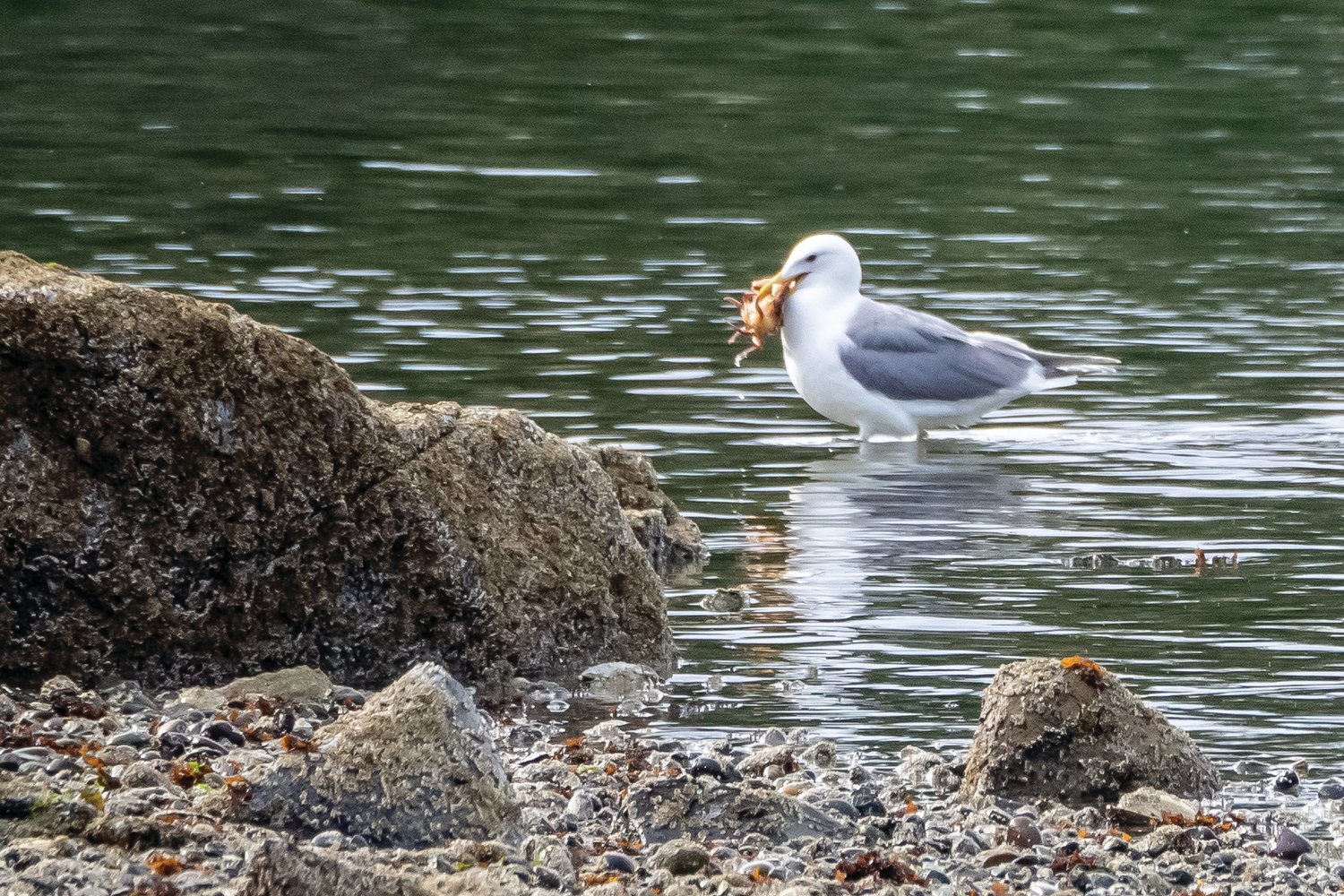Each morning at dawn, the gulls of Uptown Port Townsend unleash their raucous alarm, heralding the start of another glorious summer day. I often follow their lead, and start my own day — albeit …
This item is available in full to subscribers.
We have recently launched a new and improved website. To continue reading, you will need to either log into your subscriber account, or purchase a new subscription.
If you had an active account on our previous website, then you have an account here. Simply reset your password to regain access to your account.
If you did not have an account on our previous website, but are a current print subscriber, click here to set up your website account.
Otherwise, click here to view your options for subscribing.
* Having trouble? Call our circulation department at 360-385-2900, or email our support.
Please log in to continue |
|

Each morning at dawn, the gulls of Uptown Port Townsend unleash their raucous alarm, heralding the start of another glorious summer day. I often follow their lead, and start my own day — albeit more quietly.
As the sun rises, I pour my first cup of tea, and wonder about the gulls’ urgency to communicate with each other ... what are they saying? Cheering, or arguing? (Maybe a bit of both!)
Gulls are among the most visible (and audible!) of all wildlife, our constant companions in coastal towns and harbors.
Even on the most remote beach walks and sail journeys, a gull (or three) will sail by on 4-foot wingspan, playfully riding the wind — even on the most blustery of days. They are social, vocal, and less afraid of humans than most birds — earning them a reputation as scrounges and gluttons.
Actually, they are masters of opportunity. With a seemingly insatiable appetite, gulls will investigate almost anything that seems edible, from a dead fish on the beach, to french fries or pizza crust.
Not all gulls live by the sea. They make a living in diverse habitats, including seashores, estuaries, rivers, and lakes across the globe, and sometimes even deserts.
Did you know that Utah’s State Bird is the California Gull? (the backstory sounds almost biblical). Of the 46 species found worldwide, about half a dozen species frequent our area, the most typical being the ubiquitous Glaucous-winged Gull. Did you know? Gulls molt their feathers each year, changing over the course of two to four years (depending on species) from brownish gray juveniles to crisp, white-bellied, white-headed adults. Look for the colors of the beak and legs, as well as wingtips, as you attempt to identify the species. The red dot on the parent’s beak helps baby to find food.
I find gull “culture” fascinating; their ways of being in the world are timeless, quirky behaviors that have ensured their survival across continents, oceans, and countless centuries. Dedicated to family, and very community-oriented, they can also be independent and aggressive, notorious as scroungers and pirates — individuals sometimes living for 20 years or more! Their ancient lifeways are intertwined with our own maritime cultures, and throughout the ages their graceful independence has been seen as a symbol of freedom. (“Jonathan Livingston Seagull,” Richard Bach’s best-selling novella about a non-conformist gull, became a pop culture phenomenon and helped launch the early 1970s self-discovery movement.)
Highly social, they flock together, spend time resting and preening feathers at water’s edge, and enjoy the safety of living in large communities sometimes numbering in the thousands (see video recommendation at the bottom of this article).
For mariners, gulls have always been a familiar part of the seafaring experience, riding the sea breezes and jockeying for food scraps, and their presence can indicate landfall nearby.
Gulls are the original pirates, and will pester and steal food from each other — perhaps they are establishing a pecking order.
Similarly, a gull will attempt to bump another off a high perch next to water, practicing the aggressive “bluff.” With wings extended, and mouth agape, the newcomer unleashes an unbridled act of intimidation, complete with brash, in-your-face squawking.
In gull culture, (I suppose) it is uncouth to fight back, so usually the aggressor is rewarded; yet the victory is often short-lived, only until the arrival of the next envious pirate. There are many more rocks along the shore, and opportunities await down the beach.
Speaking of opportunities, this is my final article in the column, Field Notes.
In September, I will spread my wings, turning eastward to start a wonderful new school teaching job at the Sandpoint Charter School in Idaho (I plan to return to PT each summer and other vacations).
I hope these Field Notes have inspired you to reconnect with your childhood sense of wonder about nature. It has been said that we won’t take care of nature unless we feel a sense of kinship or love toward her. I intend to revise and publish these essays in a book format, including an updated selection of my photos. I would welcome any correspondence and suggestions. Enjoy the glorious days of late summer!
To learn more about gulls, go to allaboutbirds.org/news/a-noble-vision-of-gulls.
Check out this well-done video by Cindy Fullwiler of thousands of gulls taking flight at the mouth of the Dungeness River: olympicpeninsulaaudubon.org/blog/thousands-of-gulls-video-clip.
(Contact Gary Eduardo Perless at gperless@gmail.com.)